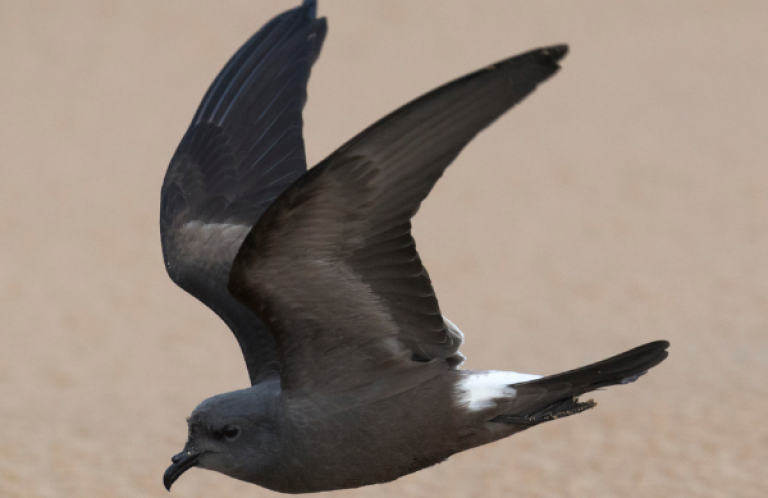Brown-headed Nuthatches Return to Missouri

Brown-headed Nuthatches are back in Missouri thanks to habitat restoration and translocation efforts. Photo by Frode Jacobson
The release of 46 Brown-headed Nuthatches, translocated from Arkansas to restored pine woodlands in Missouri's Mark Twain National Forest in August and September 2020, marked this species' return to the state. The brown-capped songbird had been absent since the early 1900s, following widespread habitat loss.
“I really think that a big take-home from all of this, and something we can all be proud of, is how well science, management, and conservation of species came together in this effort,” says Jane Fitzgerald, ABC's Central Hardwoods Joint Venture (CHJV) Coordinator. “Most of the people who, decades ago, imagined all of this happening are now retired, but a new cadre of folks saw, and see, the vision and are moving the ball forward. In the Interior Highlands, we really are a conservation community, and I hope that continues for decades to come.”
During pre-colonial times, 6.6 million acres of Shortleaf Pine and pine-oak woodland covered Missouri's Ozark Mountains. After settlement and development, which included widespread logging and fire suppression, these ecosystems were reduced to approximately 600,000 acres. The dramatic reduction in habitat led to the extirpation — or regional disappearance — of some bird species tied these open pinelands, including the Red-cockaded Woodpecker and Brown-headed Nuthatch.
The nuthatch release was only possible after successful habitat restoration, which required years of hard work and patience. Although the Mark Twain National Forest had been actively restoring 12,000 acres of pine woodland on the Eleven Point Ranger District by 2006, the work was greatly accelerated when the forest was awarded significant funding through the Collaborative Forest Landscape Restoration Program (CFLRP). The CFLRP, administered by the U.S. Forest Service, is intended to encourage collaborative, science-based ecosystem restoration of priority forest landscapes on and around national forest lands across the United States.
To help build this collaboration, ABC and the CHJV brought together key partners, including federal, state, and nongovernmental organizations and agencies that formally agreed to work together to restore pine woods in the same large landscape, called the Current River Hills. Ten years of dedicated funding was awarded to the Mark Twain National Forest in 2012, and now roughly 100,000 acres of Shortleaf Pine and pine-oak woodland has been, or is being, restored. It was this habitat restoration work that was vital to establishing the area as a place to bring back Brown-headed Nuthatches.
Shortly after the restoration work in Missouri began picking up, a team of researchers from the U.S.D.A. Forest Service's Northern Research Station and the University of Missouri pooled resources to investigate various aspects of the bird's biology, quantifying the Brown-headed Nuthatch's preferred habitat conditions in Arkansas; showing how the Missouri restoration efforts benefited other songbirds while confirming the nuthatch's continued absence; building habitat models; and assessing the habitat structure at the Mark Twain restoration sites.
In addition, the Missouri Department of Conservation's (MDC's) state ornithologist and a wildlife biologist at U.S.D.A. Forest Service's Northern Research Station worked with ecologists from Tall Timbers Research Station in Florida who had experience with Brown-headed Nuthatch translocations. With this input, they developed methods needed to safely capture the birds in Arkansas, then safely transport them to Missouri.
Because the nuthatches were released on public land, anyone can see these birds. Mark Twain National Forest visitors can help monitor the nuthatches' presence and movements by submitting their observations to the eBird database (www.ebird.org).
###
Media Contact: Jordan Rutter, Director of Public Relations, 202-888-7472 | jerutter@abcbirds.org | @JERutter
Expert Contact: Jane Fitzgerald, Central Hardwoods Joint Venture Coordinator | jfitzgerald@abcbirds.org
American Bird Conservancy is a nonprofit organization dedicated to conserving birds and their habitats throughout the Americas. With an emphasis on achieving results and working in partnership, we take on the greatest problems facing birds today, innovating and building on rapid advancements in science to halt extinctions, protect habitats, eliminate threats, and build capacity for bird conservation. Find us on abcbirds.org, Facebook, Instagram, and Twitter (@ABCbirds).


















































